HMS Queen Elizabeth returned to UK waters last month following completion of Merlin and Chinook flying trials and this revised strategy has eliminated the need for separate trials, ensuring the time available on deck was used to maximum effect and avoiding a second voyage out to sea later in the year.
The initiative will ultimately expedite the release of the carrier into service, say Qinetiq.
The trials, conducted by QinetiQ and the Air Warfare Centre under the Air Test & Evaluation Centre (ATEC) partnership, brought the two aircraft together on deck for the first time as part of a cost-saving initiative negotiated between QinetiQ and the UK Ministry of Defence (MOD). The Merlin trial was originally contracted in April 2016, with Chinook added to the existing agreement at the end of 2017 under a new contract amendment.

John Anderson, Managing Director Air & Space, QinetiQ, said:
“We are proud to contribute to the Royal Navy’s carrier programme, which forms such a vital part of the UK’s defence capability. These deck trials have been among the biggest ever conducted, and mark an important step towards enabling the carrier’s rotary wing capability, ahead of the F-35 trials planned later in 2018.
Combining the trials delivers on our strategy to help customers make best use of their available funding when conducting mission-critical test and evaluation work.”
Prior to the trials, QinetiQ at MOD Boscombe Down designed and installed flight instrumentation for two Merlin Mk 2 and two Chinook Mk 5 helicopters and delivered pre-trial simulator training to their test pilots. The aircraft then deployed to HMS Queen Elizabeth in the Atlantic and, over a period of four weeks, conducted landings at different weights and in varying conditions, including in the dark using night vision. The ATEC team undertook data analysis and reporting to establish each aircraft’s safe operating limits.
The work continues a three-year programme that includes assuring flight operations for the new Tide Class Tankers and Off Shore Patrol Vessels, and will ultimately provide rotary wing aircraft clearances for the life of the new aircraft carriers.


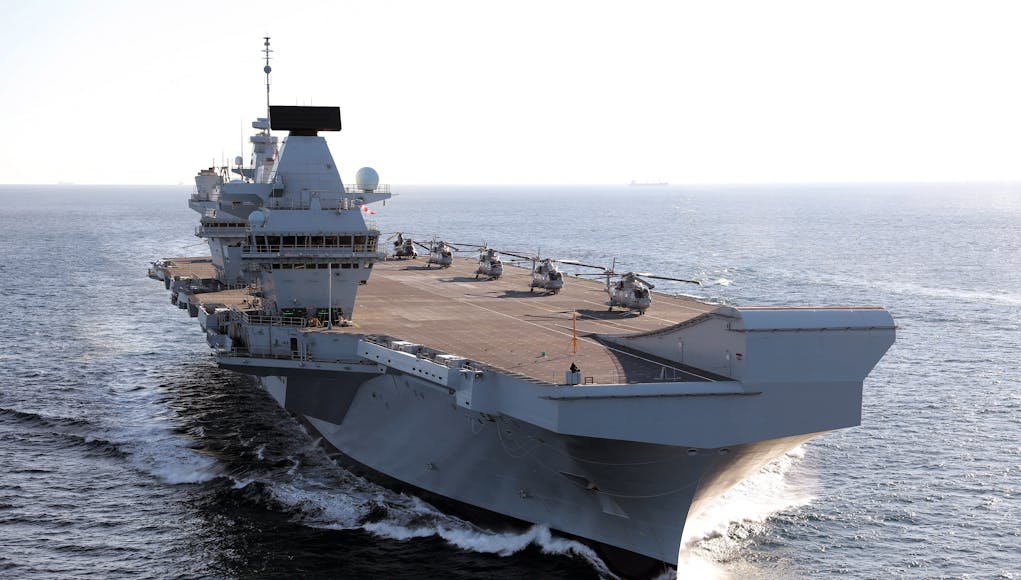
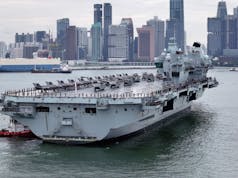
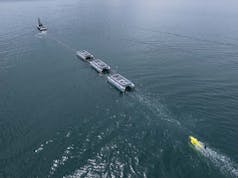
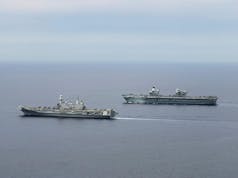
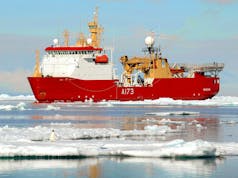







Considering how big this thing is it really makes me wonder why they felt they needed to split the two testing periods in the first place.
its crazy how the UK seems to drag out trials for new military equipment. The RAF must be the worst given how long project Centurion is taking.
So let me see – We haven’t had a large carrier for like decades and according to you two experts we just fly aircraft onto the QE – Simples?
And of course adding new weapons, radars, ground attack systems to an advanced 4.5 Gen aircraft and enhancing what we already use as they migrate from Tornado, while defining the flight envelope as they do, the RAF just needed a box of spanners – Simples!
#FacePalm
You’re saying it takes 15 years to equip the Typhoon with Brime Stone and Storm Shadow? 15 years really? Keep your face in you’re palm. It took months to enable them on the Tornado ahead of the Iraq war. If it wasn’t for the embaressment of libya we’d still be testing paveways on theTyphoon.
BB85 – With respect it doesn’t help your point by fabricating a gross exaggeration:
The first Typhoon OCU was first formed in May 2004 with the first Squadron (No 3) going operational in April 2006. The aircraft was designed (please note the word) as our QRA and Interceptor (A2A) fighter asset and became operational in that role in June 2007 11 years ago. Not 15 years.
While it was equipped with sensors and weapon platforms suitable for multiple roles in a single mission it wasn’t until Afghanistan that work started on upgrading to FGR.Mk 4 designations equipped with the Litening III targeting pod and Paveway II laser-guided, or Enhanced Paveway II laser/GPS-guided bombs so that would be 2008 / 09. Less than 3 years from introduction to RAF operations (in a completely different role). Not 15 years.
And given that we had the Tornado for all those GA missions why would we rush to convert / adapt Typhoons especially as in 2009 we were only just starting Tranche 2 builds and we had planned to ‘build in’ upgrades on the production line. Reality is we don’t need Typhoons in their full multi role guise until next year. 10 years after their first upgrade. Not 15 years.
And of course what is being migrated on to the Typhoon now is years ahead of what was ‘designed in’. For example the Storm Shadow or Brimstone weapons on Typhoon are considerably different to those used on Tornado which, you seem to forget, was designed for these type of weapons in the first place (and yes I know it started off in F1, 2 and 3 guise).
So yes I will continue the #FacePalm when people make uneducated and exaggerated remarks based on nothing but a need for sarcasm and negativity.
Storm Shadow integration work started on the Typhoon back in 2012 that means it will be 6 years of testing before its completed. Glad we both agree the Typhoon has been operating for 15 years, we both agree this was initially in QRA A2A role only but you seem to think taking 15 years to integrate legacy strike missiles is a job well done. #Facepalm
BB85 – Its a shame you had to add ‘insult to injury’ by fabricating I agree in any way (let alone I approve of) ’15 years to integrate legacy strike missiles is a job well done’.
My whole response has been to the contrary and in some detail I pointed out your fundamental error if not lie. And you then repeat your lie for some reason despite the factual rebuttal – Why? Typhoon has been operational for less than 11 years not 15 as you allege. Migrating GA weapons began in 2008 / 09 some 9 or 10 years ago not 15 as you allege.
And you completely ignore the simple fact that the whole upgrade was planned in for production of later Tranche 2 and Tranche 3 rather than post build upgrade (which is more expensive and has limitations). And that production process was timed for the retirement of the Tornado in 2019.
Making a mistake is one thing but to keep repeating a false statement even when presented with the truth is at best argumentative….
They’re testing different kinds of helicopters I doubt the differences are so vast that a decently trained crew couldn’t handle it and if so how will they ever manage when the thing does go to action? Is it really that hard to imagine them testing one type on the front half and the other on the other half and just swapping about now and then? Not only that they don’t all have to land together at the same time for the first few tries.
They somehow muddled through so it couldn’t have been impossible.
I don’t know your background, and I will straight away confess that I have no military experience, but answer me the following two questions…
Why would people many of whom have probably dedicated their life to the RN, possibly coming from military families going generations back thus feeling a deeper connection with the RN than most, want to make the RN less effective than it could be by deliberately slowing down the trials?
If you accept that is unlikely (and maybe you don’t) then why would those people, who have been planning these trials for years with access to experts on every nut, bolt, pipe, network connection, proposed standard operating procedure, etc for every part of this process be less capable than you of devising an optimal plan for the trials?
#FacePalm
And the same points for the RAF and Army.
They know more than the royal navy these experts lol … It must be easy kitting out a huge carrier in some ppls heads .. Its state of the art kit not a Russian old rust bucket ..
Plus isn’t that a photo of Ocean?..lol
It was taken on the deck of QE, but she was in port at the time with ocean berthed behind her. Ocean doesn’t have enough space in front of her island to get two chinooks that far forward!
Cheers Max,
Couldn’t work it out as the deck area looked too big for Ocean.
Thought it might be a ‘trick’ photo lense, but you’re explaination makes total sense. Thanks
(The second photo that is, not the first)
Nope
Second photo is definitely not HMSQE.
Check out this article for photos of HMSQE islands
http://www.savetheroyalnavy.org/the-reasons-hms-queen-elizabeth-has-two-islands/
I believe it is Ocean
It got me too Mike.
See Max’s comment above.
Ok I now understand, thanks for the information.
Oh dear this is terrible news for the RN knocking papers, what will they greet about noo?
“and avoiding a second voyage out to sea later in the year”
F35-B flight trials this summer, surely? Or before even?
F35 trial dates are fixed. There is equipment that needs to be installed on the carriers, as well as a timeline for exercises with the US.
Cheers.
[…] post Combined helicopter flight trials speed up HMS Queen Elizabeth entry into service say Qinetiq appeared first on UK Defence […]
Is Apache programmed for similar trials? Or are they waiting until Apache – E is in service…?
They have stated that HMS QE will be able to act as an LPH by the end of the year, which requires them to be able to operate Merlin, Chinook, Apache and Wildcat.
Since the Royal Marines will be carrying out exercises ashore on the US east coast while HMS QE is doing F35 trials at the end of the year, I imagine they will be carrying out Apache and Wildcat trials at the same time, or just before.
Yes, I am pretty sure I read that the carrier will be cleared for the LPH role prior to the F35b trials.
Which suggests Apache, Wilcat, Merlin HC3/4 as well further Chinook trials over the summer.
Good Morning from Durban
My old eyes trying to work out photo number two. If it is Ocean then as an aside, whats with the Union Jack flying from somewhere in the background? If it is a Naval Jack then the proportions should be 1:2. In the picture it appears to be 3:2 which was generally the spec for flying on land?
When ships are docked, don’t they fly a Union Jack on the bow and a Naval Ensign on the stern? Not sure if that answered your question but I think the flag you can see is being flown on Ocean’s bow
Max explained it all above. The Chinooks were on the stern area of the QE flight deck and the photo was taken in Portsmouth with Ocean berthed astern. Hence the Union Jack is flying from Ocean’s Jackstaff
Thanks Levi and Chris. Now I can see it but still the UJ’s proportions look wrong-a Naval Jack should be 1:2 but hey here in Durban our local Police Station often flies the SAPS Ensign upside down so I shouldn’t complain. And to Peder-b
obviously no fan of the RN- Ocean has not been decomissioned or transferred to Brazil yet so entitled to fly a Union Jack. As to “Wee Navy” I think you will find that deficiencies notwithstandin g the RN is still 3rd or 4th largest in the world by tonnage.
The wee UK navy is flying flags from flogged off ships. What a joke.
Moë sudno na vozdušnoj poduške polno ugrej
🙂 Translation please Julian
It’s “My hovercraft is full of eels” in Russian. You probably need to be of a certain age to get the Monty Python reference. I thought that some total nonsense in Russian was the appropriate response to this troll.
(I don’t speak Russian by the way, there is a site where someone has translated this phrase into almost every language known to man – http://www.omniglot.com/language/phrases/hovercraft.htm).
I’m a big MP fan!
Surely it should read, “O meu hovercraft está cheio de enguias” based on where she is ending up?
You’re the only joke here pal. DIE!